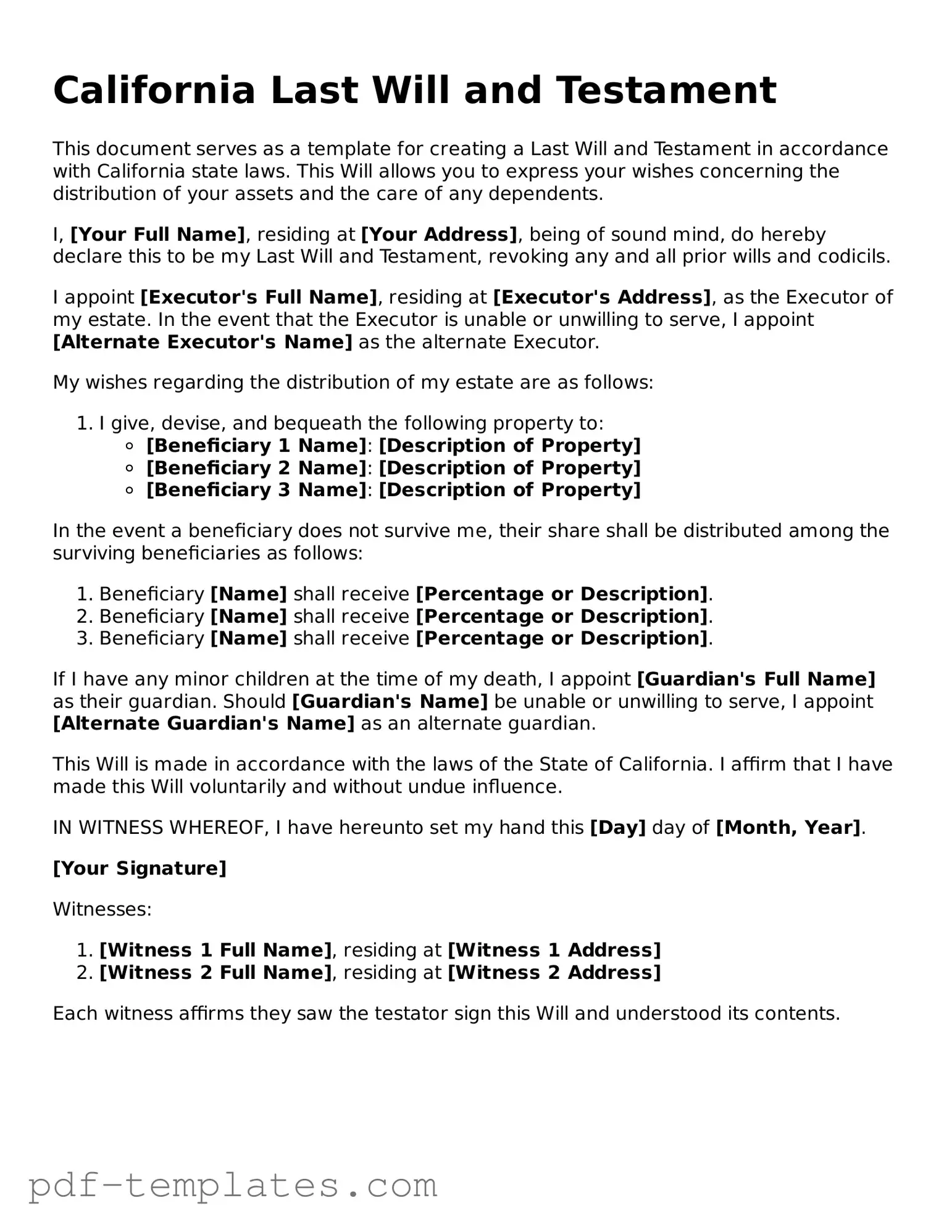The California Living Trust is similar to a Last Will and Testament in that both documents allow individuals to dictate how their assets should be distributed after their death. However, a living trust can take effect during the person's lifetime, allowing for management of assets while they are still alive. Unlike a will, a living trust typically avoids probate, which can save time and money for beneficiaries.
A Durable Power of Attorney is another document that shares similarities with a Last Will and Testament. While a will addresses asset distribution after death, a durable power of attorney allows an individual to appoint someone to make financial or medical decisions on their behalf while they are still alive but incapacitated. This ensures that someone trusted manages affairs without needing court intervention.
A Health Care Directive, also known as an advance healthcare directive, is related to a Last Will and Testament in that it outlines an individual’s wishes regarding medical treatment in the event they become unable to communicate those wishes themselves. While a will deals with property distribution, a health care directive focuses on personal health decisions, ensuring that medical care aligns with the individual’s preferences.
A Revocable Trust is similar to a Last Will and Testament in that it allows individuals to manage their assets and determine how they will be distributed upon death. The key difference is that a revocable trust can be altered or revoked during the grantor's lifetime, providing flexibility in asset management. Like a living trust, it also avoids probate, making the transfer of assets smoother for beneficiaries.
Understanding the importance of a temporary Power of Attorney for a Child is crucial for parents who need to ensure their child is taken care of in their absence. This document allows designated adults to make necessary decisions when parents are unable, providing peace of mind during uncertain times.
A Codicil serves as an amendment to an existing Last Will and Testament. It allows individuals to make changes or additions without needing to create an entirely new will. This document must meet the same legal requirements as a will, ensuring that any modifications are valid and enforceable.
A Joint Will is another document that bears similarity to a Last Will and Testament. It is a single will executed by two individuals, typically spouses, that outlines the distribution of their combined assets. Unlike separate wills, a joint will can complicate changes in the future, as it may bind both parties to its terms unless both agree to amend it.
A Pour-Over Will works in conjunction with a living trust. It ensures that any assets not transferred to the trust during the individual's lifetime are "poured over" into the trust upon death. This type of will simplifies the estate distribution process, ensuring that all assets are managed according to the trust’s terms.
A Testamentary Trust is created within a Last Will and Testament and comes into effect upon the individual's death. It allows for the management of assets for beneficiaries, often used for minors or individuals who may not be ready to manage their inheritance. This type of trust provides ongoing management of assets, ensuring that they are used according to the deceased's wishes.
A Family Trust is similar to a Last Will and Testament in that it is designed to manage and distribute family assets. It allows for the creation of specific terms regarding how and when beneficiaries receive their inheritance. This document can help protect family assets from taxes and creditors, providing a structured approach to estate management.
